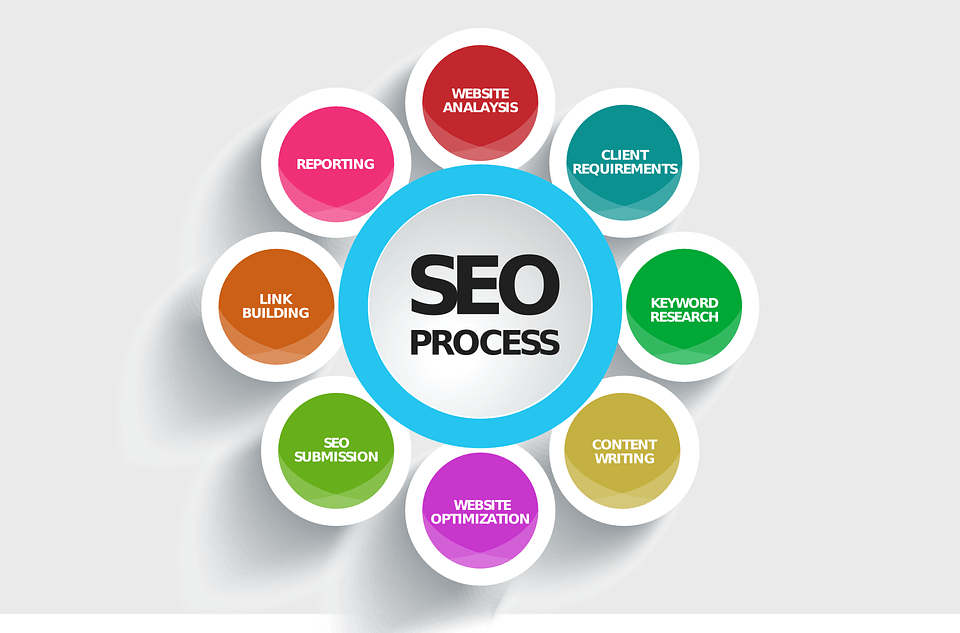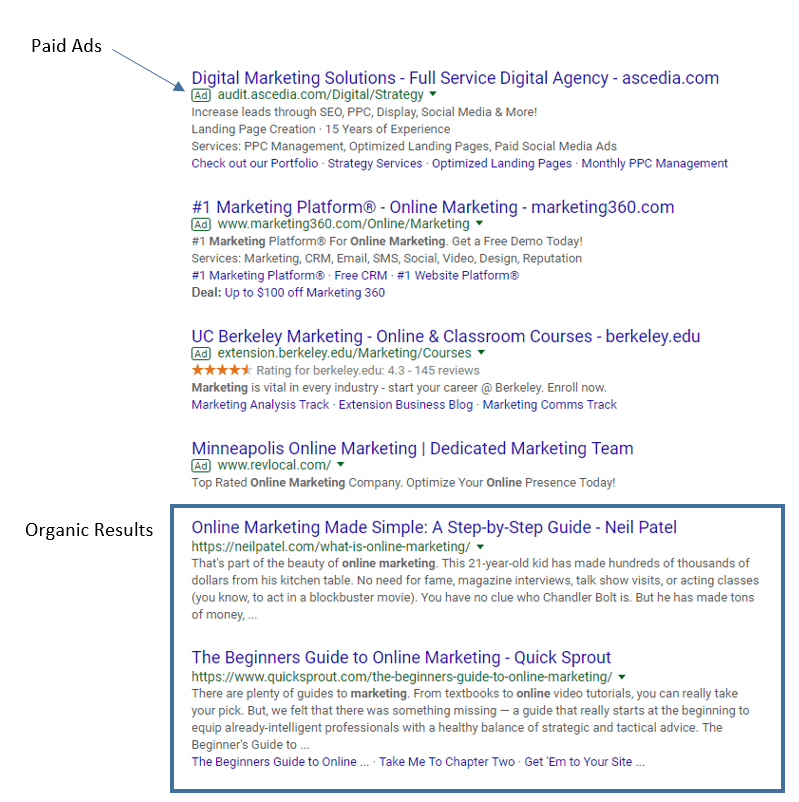As a recruiting firm, you want to make sure you’re not spending your marketing budget on the wrong keywords or unintentional calls. Recruiting firms using PPC have to really look at the negative keywords they are using, as well as the competitors they are showing up for, to ensure they’re not wasting valuable ad spend on false conversions.
For example, if you’re a staffing firm and you want to show up for the keyword staffing agency near me, you want to make sure you have all the major competitor names in your area as negative keywords.
Related Post: What is SEO? Beyond the Keywords ➢
What are Negative Keywords for Recruiting Firms?
Negative keywords are a type of keyword that prevents your ad from being triggered by a precise word or phrase. When deployed, anyone searching for that precise word or phrase will not be shown in your ads. But if you don’t utilize negative keywords, your ads will show up in inefficient searches.
Let’s use an example of Robert Half, a well-known staffing agency. If someone types in Robert Half staffing as a search term and you have staffing as a broad term in your keyword list you are bidding on, you will show up for that search.
You might be thinking, that’s great, my firm can be positioned to compete with them! But it’s not like that at all.
It has been tested and tested and no matter how many times your upper management “thinks” that your team can steal that lead…the answer is NO. If someone is looking for your competitor with a branded searched, they are almost certainly so deep into the sales funnel that you have little-to-no hope at stealing the lead.
Now I know you are thinking: “Well if the searcher reads the ad copy and URL in my ad they will see that I am not Robert Half.” The trouble is, people don’t pay as much attention to the ad as you WANT to believe they do. A lot of people just click on the first option that pulls up on their phone or desktop after typing in their search query.
Now, I am not saying that ad copy is not important because it definitely is. I’m saying that putting all of your trust, and ad spend, on the low-percentage chance that the searcher diligently reads the ad copy is not a prudent idea.
Related Post: New Site Launch SEO Checklist ➢
The Danger of Neglecting Negative Keywords
So, if your company is using staffing as a general keyword in your keyword list, you would show up for the search term Robert Half staffing. When the searcher inevitably doesn’t catch that you’re not Robert Half, here’s what’s going to happen.
The searcher is going to click to call the agency and your office answers:
“Hello this is ABC Staffing. How can I help you?”
The searcher will rightly be confused and disoriented not to hear Robert Half, and either hang up or ask for Robert Half. Once the searcher clicked call, you lost a good amount of money based on the keyword cost of each click. If you don’t use negative keywords for your competitor names, you will continue to cost yourself money and fail to get the conversions you’re expecting. Not to mention you’ll skew your analytics and metrics in the process, making it difficult to forge a future PPC strategy.
How many Competitor Recruiting Firms Should I Have in my Negative Keyword List?
The more the merrier. Having a large number of competitors in your negative keyword list will get you more accurate conversion data, better click-through rates, and greater return on your ad spend. In the end, every staffing agency monitors marketing budget and specifically paid media/PPC very closely, so you want to make sure you’re optimizing and structuring your campaigns the best you can. Using negative keywords and specifically, competitor negative keywords is a big part of budget savings.
In closing, negative keywords will help you save budget and give you the ability to get in front of the exact client/candidate you are looking for. Make sure you are continually monitoring and adding negative keywords to your list. It’s wise to set aside time to go through your search query reports to see where you are potentially losing money on unneeded clicks.
So, the next time someone tells you that you have an opportunity to increase overall organic visibility on your site, hear them out. Ask them pointed questions about how they plan to drive marketing success.
And if you do find yourself starting a partnership with a marketing agency, here are four ways to build an effective relationship.












 Recipe websites leverage
Recipe websites leverage 




 If you don’t specialize in that area, it’s not likely your website has content around those keywords, so it’s not likely you are going to rank for that search at all. No chance of being found. (PS, we all know the importance of focusing on a niche industry and/or market is a whole different conversation.)
If you don’t specialize in that area, it’s not likely your website has content around those keywords, so it’s not likely you are going to rank for that search at all. No chance of being found. (PS, we all know the importance of focusing on a niche industry and/or market is a whole different conversation.)

 “If you don’t have SEO in mind from the initial strategy session, you’re going to lose what you took so much time and effort to build. Everything from the structure of your website to the meta description of your website pages is important and should be taken into consideration.”
“If you don’t have SEO in mind from the initial strategy session, you’re going to lose what you took so much time and effort to build. Everything from the structure of your website to the meta description of your website pages is important and should be taken into consideration.” “All too often, when we’re brought in for SEO work on a redesign, it’s often late in the process, such as when the site is being coded or even totally complete. The advice that usually needs to be passed on at this point will most likely cost the company much more in design, coding, and more.”
“All too often, when we’re brought in for SEO work on a redesign, it’s often late in the process, such as when the site is being coded or even totally complete. The advice that usually needs to be passed on at this point will most likely cost the company much more in design, coding, and more.” “SEO is neuropsychology. SEO is conversion rate optimization. SEO is social media. SEO is user experience and design. SEO is branding. SEO is analytics. SEO is product. SEO is advertising. SEO is public relations. The fill-in-the-blank is SEO if that blank is anything that affects any input directly or indirectly.”
“SEO is neuropsychology. SEO is conversion rate optimization. SEO is social media. SEO is user experience and design. SEO is branding. SEO is analytics. SEO is product. SEO is advertising. SEO is public relations. The fill-in-the-blank is SEO if that blank is anything that affects any input directly or indirectly.”

 White Hat techniques target human audiences rather than simply search engines.
White Hat techniques target human audiences rather than simply search engines.




